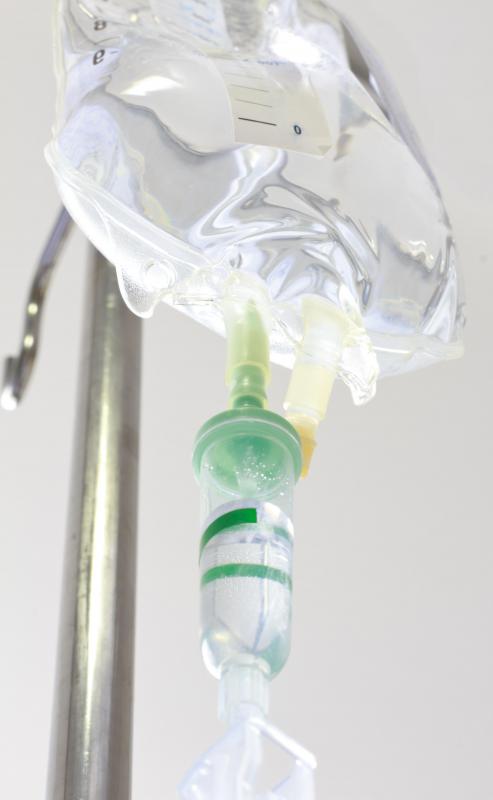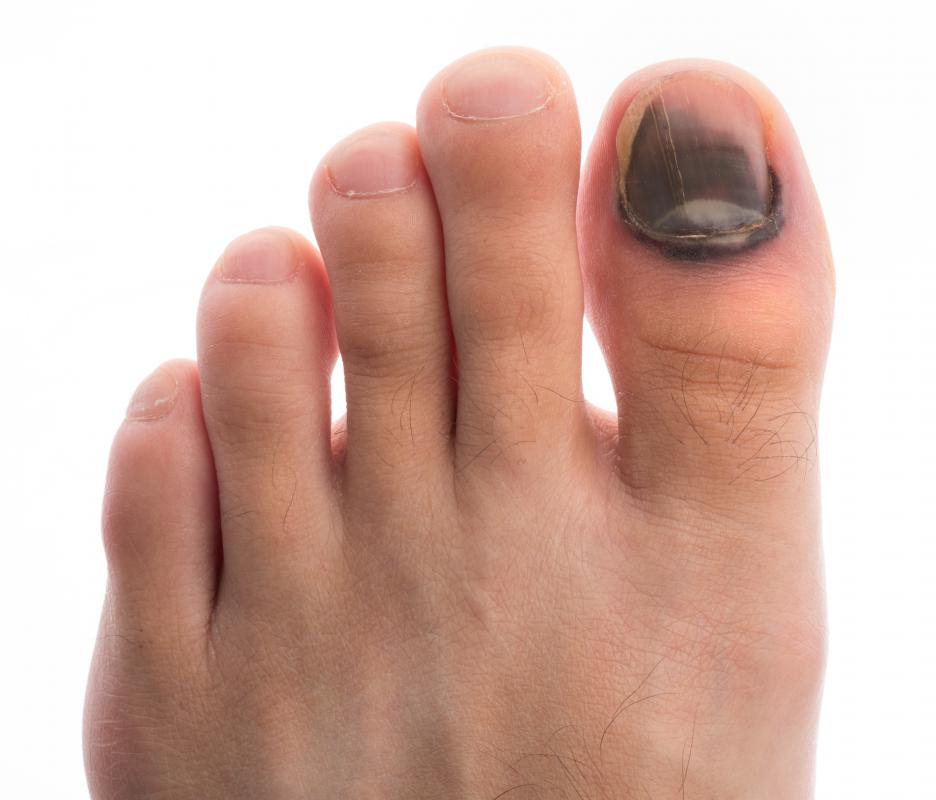At TheHealthBoard, we're committed to delivering accurate, trustworthy information. Our expert-authored content is rigorously fact-checked and sourced from credible authorities. Discover how we uphold the highest standards in providing you with reliable knowledge.
What Are the Common Cause of Pus in a Toe?
Pus in a toe is caused by an infection. Although viral infections can cause symptoms of pain, redness, and inflammation, they do not cause pus to form. A bacterial infection or organism is responsible for pus, and can be caused by an infected ingrown toenail or toe injury. The pus usually is accompanied by extreme sensitivity, warmth over the affected area and swelling. When these symptoms occur, the health care provider needs to be consulted to evaluate and treat the infection.
Generally, when pus in a toe occurs, the health care provider will recommend an antibiotic ointment or an oral antibiotic. In certain cases, both types of antibiotics may be recommended. In addition to antibiotic therapy, the health care provider may choose to lance the area to express the pus and clean out the wound. Lancing an infected toe to remove pus is not recommended outside of a health care setting, because doing so can increase the risk of tissue damage and exacerbate the existing infection. After the health care provider has cleaned out the wound, antibiotic ointment is generally applied, followed by a sterile bandage or dressing.

If red streaks appear near the infection, it could indicate the presence of blood poisoning. This is a medical emergency that needs to be evaluated quickly to avoid a condition known as septicemia. This is a life-threatening condition and could cause dangerous low blood pressure, major organ damage, and cardiac arrest.
An untreated infection characterized by pus in a toe can cause symptoms of fever, chills, nausea, vomiting, and muscle pain. These can indicate that the infection went from a local infection to one of a systemic nature. In rare cases, hospitalization may be required for intravenous antibiotics.

Mobility may also be affected when pus in a toe is present. Shoes may aggravate the condition and make walking difficult. Taking an over-the-counter pain reliever can help with pain and swelling, and may also relieve certain symptoms of a systemic infection such as fever, muscle pain and headache. Soaking the foot in warm water a few times per day may also relieve pain and swelling, and promote healing. Sometimes the health care provider may recommend a special boot or shoe to be worn during the recovery period to avoid frictional irritation caused by wearing shoes.
AS FEATURED ON:
AS FEATURED ON:





















Discussion Comments
@ZipLine-- Do you have any circulation problems because of diabetes or some other condition?
My dad has diabetes and he has diabetic neuropathy. He has very poor circulation in his lower legs, feet and toes. Even if there is a small crack in his skin, he can have serious complications from it, including infection and tissue death.
He had to take antibiotics about six months ago because of a toe infection that went out of control. His toe was abscessed and filled with pus. That's why we inspect his feet all the time. He also has regular check-ups with his doctor to make sure that everything is fine.
It's extremely important for diabetics to take every infection seriously.
@ZipLine-- That can definitely happen. As far as I know, all types of skin and nail infections can cause pus.
Do you happen to have an ingrown nail as well? Ingrown nails can get infected and it's not impossible to have an ingrown nail and a fungal infection at the same time.
You should soak your toes in water with vinegar or tea tree oil. It's effective against fungal infections.
Can a nail fungal infection cause pus in a toe?
I have a fungal toenail infection, which is being treated. But this morning, I also saw some pus underneath the toe. Is this common?
Post your comments